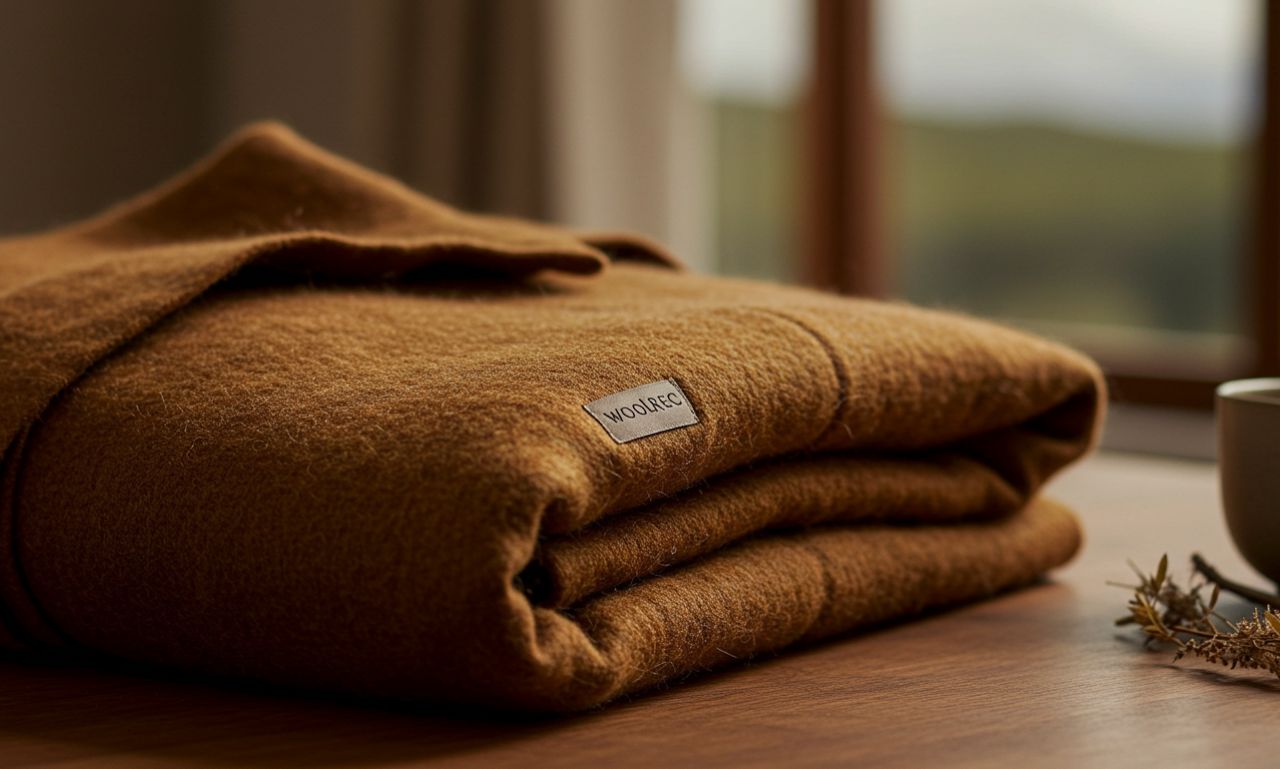Woolrec: A Deep Dive into the Past, Present, and Future
“Woolrec” is a name that carries multiple associations depending on the region, the industry, and the context. It can refer to an ecological/industrial concept, a fashion / textile sustainability initiative, or a controversial recycling enterprise. Understanding Woolrec means navigating between its promise and its pitfalls; between innovation and scandal; between sustainability goals and real-world implementation. In this article, we explore what Woolrec has meant historically, what it is today in several interpretations, what are the issues around it, and what lessons or prospects emerge.
Origins & History
One of the more concrete historical uses of the name “Woolrec” refers to a recycling company in central Hesse (Mittelhessen), Germany. According to publicly available sources, Woolrec was founded in 2002 in Tiefenbach, with support (including financial) from the German federal environment ministry. Its purpose was to process waste materials (especially old insulation material containing mineral fibers) and to turn them into a product called “Woolit,” which was claimed to be a safe, useful additive for brick/brick-production.
However, over time serious allegations surfaced: that the claimed transformation (turning hazardous mineral fiber waste into safe, inert additive material) was not actually happening. Instead, hazardous fibers were allegedly just being passed on under the guise of Woolit. The company faced protest from local residents, scientific and media investigations, and ultimately legal proceedings. The concern was that the materials being sold were dangerous (cancer‐causing fibers) and being used in construction (bricks) under false pretenses.
Legal action eventually followed. After years of scrutiny, the Woolrec scandal became a case study of environmental regulation, public trust, and the risks of inadequate oversight. It illustrated how promises of “recycling” or “recovery” of hazardous waste can mask simple waste transfer, and how oversight mechanisms and transparency can fail.
Woolrec As a Sustainable Textile / Recycling Concept
More recently, and in positive light, Woolrec is used in various media and blogs to mean a concept or initiative centered around wool recycling, sustainable textile production, and eco-friendly material reuse. This is not necessarily the same organization as the German one, but rather a generic or possibly brand name approach/initiative.
Key features of this movement include:
-
Using discarded wool (post-consumer garments, leftover wool from manufacturing) as raw material.
-
Sorting, cleaning, decontaminating wool fibers, removing contaminants (dyes, non-wool material) to restore as much of the original fiber quality as possible.
-
Blending or spinning recycled wool into new yarns or fabrics, for fashion, home textiles, insulation, or technical applications.
-
Aims toward a circular economy: reducing waste, lowering environmental footprint, using renewable resources, biodegradable materials.
In journalism and green-fashion blogs, Woolrec is presented as an innovation helping to shift textile industries away from fast fashion, reducing water, energy, chemical use and landfill load.
Contrasts: Promise vs Reality
Promise
-
Environmental Benefits: Reduced waste, lower greenhouse gas emissions, reduced use of virgin wool (which itself has environmental costs in sheep farming, water use, land etc.). Wool is also naturally biodegradable, which helps if the recycled products eventually reach end-of-life.
-
Economic & Social: Provides opportunities for local economies, spinners, artisans; potential for job creation in recycling and textile sectors. Offers consumers sustainable alternatives.
-
Innovation & Technological Development: As recycling technologies improve (mechanical, chemical), treating mixed fabrics, separating fibers, cleaning colored/dyed textiles, etc., the quality of recycled wool can improve.
Risks, Challenges & Sometimes Misuses
-
Scandals & False Claims: As in the German Woolrec case, “recycling” or “valorisation” projects can be misused or misrepresented. What is claimed in lab reports or in permits may not match practice. Monitoring, regulation, transparency are essential.
-
Technical Challenges: Blended fabrics (wool mixed with synthetics) are harder to recycle effectively. Contamination, dye removal, fiber‐damage during recycling can degrade quality. Some chemical recycling methods may themselves have environmental or cost burdens.
-
Cost / Infrastructure: Establishing collection systems for waste wool, sorting, processing plants, and ensuring quality control can be expensive. Transport, handling, certification also add cost. Surge in demand for recycled materials is needed to support the scale.
-
Consumer Awareness: Consumers must know what to look for (certifications, transparency) to distinguish genuinely recycled or sustainable wool from greenwashing. Without awareness, claims may mislead.
Regulatory and Ethical Dimensions
Because Woolrec (in its various senses) touches on waste management, environmental health, industrial regulation, and public safety, there are significant regulatory, ethical, and social dimensions.
-
Regulatory Oversight: Ensuring that materials claimed safe are safe, that harmful materials are not being passed off. Permits, inspections, independent testing are crucial. The German case shows what can go wrong when oversight is lax.
-
Environmental Justice: Locations of recycling plants, waste processing may affect local communities—if hazardous materials leak, or air, water, soil are compromised. Local consent, transparency, and monitoring are important.
-
Animal Welfare & Farming Practices: For wool to be sustainable, how sheep are raised, sheared, transported matters. If wool is certified (organic, regenerative, fair trade), that adds credibility.
-
Supply Chain Transparency: From farm to fiber to finished product. Consumers increasingly expect traceability: where did the wool come from, how was it processed, how was the waste handled, etc.
The German “Woolrec” Scandal: A Case Study
Because it’s vivid, instructive, and has large implications, here is a more detailed look at the German Woolrec case.
-
Founded 2002 with €550,000 in funding.
-
Purpose: Process old insulation materials containing mineral fibers, make Woolit as additive for bricks.
-
Over time, serious doubts raised: that dangerous mineral fibers (potentially carcinogenic) were essentially being passed into bricks without real neutralization. Retained as hazardous waste rather than being made safe.
-
Media, residents raised alarms. Measurements found high levels of harmful substances in some materials. Eventually legal action, regulatory intervention.
-
Outcome: production was stopped, the company shut down operations. Legal verdicts initially given, then some overturned on procedural grounds.
Lessons:
-
Transparency is vital: claims must be verifiable via independent testing and public reporting.
-
Oversight throughout process: not only planning and permit stage, but monitoring actual waste streams, emissions.
-
Community engagement: local populations often first notice odd smells, health effects, and have to fight for recognition.
-
Regulation must catch up with technology: new materials, recycling processes, additives, etc., need updated safety standards.
Current Uses & Initiatives (2023-2025)
As of recent years, the term “Woolrec” (in its positive, sustainability sense) appears in blogs, green-fashion media, eco-textile reports, describing initiatives to recycle wool and create sustainable textile lines.
Some highlights:
-
Brands and manufacturers in fashion are using recycled wool in new apparel to meet consumer demand for ethical and sustainable fashion.
-
There is increasing interest in technical applications (insulation, home textiles) where wool’s natural properties (thermal regulation, fire resistance, biodegradability) are advantages.
-
There is growing pressure from consumers, NGOs, and governments for circular economy models, reducing dependency on virgin fiber, lowering textile waste. Woolrec fits as a potential component.
Could “Woolrec GmbH” Be Another Entity?
One more note: there is a company called Wool.rec GmbH, registered in Germany in 2020.It isn’t immediately clear how this company relates (if at all) to the older Woolrec recycling scandal or to the newer recycling/sustainable textile uses of “Woolrec.” It might be a separate business entity, perhaps targeting wool or textile recycling or related fields. More information (e.g. their business purpose, operations, public disclosures) would be needed to clarify.
Prospects & What Needs to Happen for Woolrec (in its positive sense) to Scale
If Woolrec (sustainability/wool recycling) is to become a major player in textile/industrial sectors, several key factors need to align.
-
Better Collection & Sorting Systems
-
For recycled wool to be high quality, we need to segregate wool at source: avoid mixing with too many synthetic fibers or non-textile contaminants.
-
Efficient logistics: collecting used garments, industrial offcuts, etc., without huge transport carbon costs.
-
-
Technological Advances
-
Mechanical recycling that preserves fiber length and strength.
-
Eco-friendly chemical recycling or treatments (safe dyes, minimal water/energy).
-
Improved processes for decolorizing dyed wool, removing contaminants without toxic chemicals.
-
-
Standards, Certifications & Transparency
-
Certifications like GOTS, OEKO-TEX, or specific recycled fiber standards help build trust among brands and consumers.
-
Clear disclosure about source, processing, life cycle assessments, environmental and social impacts.
-
-
Economic and Policy Support
-
Subsidies, incentives for companies to shift to recycled wool.
-
Regulations that make waste disposal more costly, or that require minimum recycled content in textile products.
-
Grants for R&D in recycling tech.
-
-
Consumer Awareness & Demand
-
Without consumers willing to pay a little more (if there is cost premium) for recycled/sustainable wool, companies may not invest.
-
Education campaigns about benefits (durability, environmental footprint, etc.).
-
-
Overcoming Blended Fabric Problems
-
Many garments combine wool with synthetics: complicates recycling.
-
Development of processes to separate such blends or design products from the start for recyclability.
-
Ethical, Environmental & Social Implications
Woolrec is not just a technical or business concept; it has deep ethical, environmental, and social implications.
-
Waste and resource inequality: Textile waste is global. Developed countries often export waste. Ensuring that recycling is not just shifting burdens to vulnerable communities is important.
-
Animal welfare: Sheep farming, shearing, land use, methane emissions. Sustainable wool must consider these.
-
Chemical use and pollution: Dyeing, cleaning, decontamination. The very processes used to recycle must avoid creating new harms.
-
Transparency in claims: Whether for “recycled wool,” “organic wool,” “low carbon,” etc., claims must be accurate to avoid greenwashing.
-
Local impact: Recycling facilities must be safe, with proper environmental controls, to avoid harming local communities.
Conclusion
Woolrec sits at a crossroads. On one side is its darker history — the German Woolrec scandal — which reminds us that “recycling” and “recovery” are not inherently good unless properly executed, regulated, and transparent. On the other side is its more hopeful vision: a world where wool waste is not discarded but reimagined; where textile industries are circular rather than linear; where consumers, producers, and regulators work together toward sustainable, ethical materials.
If Woolrec (in the positive sense) is to fulfill its promise, then these are the keys:
-
rigorous regulation and oversight
-
honest disclosure and certification
-
investment in recycling technologies
-
support (economic, policy) for sustainability
-
awareness and demand from consumers
Ultimately, Woolrec can be more than a buzzword. It can represent a model of how materials that seemed past their useful life can be renewed, how waste can become resource, and how industries can change not just for profit but for our planet.














Post Comment